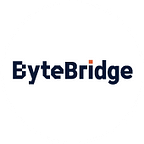How Data Labeling and Annotation Services Empower Logistics in 2021?
Automatic driving technology may take the lead in Logistics
With the prominent performance of auto-driving distribution vehicles and self-driving sanitation vehicles, the technology of autopilot is expected to make breakthroughs in low-speed scenarios and logistics distribution fields.
According to statistics, the total financing amount of Q1 global auto-driving enterprises in 2020 exceeded 3.5 billion US dollars, an increase of more than 34% compared to 2019.
In many cases, the financing amount has exceeded 100 million US dollars. Among these, one startup is focusing on auto-driving trucks. It is of great significance to be able to complete such large financing. This means that as a start-up, enterprises can get enough financial support in R & D, commercial, publicity, etc.
Auto Driving Truck in Intelligent Logistics in 2021
In the auto driving industry, with the continuous progress of technological innovation, the improvement of laws and regulations, and the acceleration of infrastructure construction, the difficulty is still how to realize commercial business faster. In fact, many major players have been trying to promote commercialization. Taxi passenger transport scenarios and truck freight scenes are two popular areas.
More read: Robotaxi is getting closer
More read: Self-driving Truck, is it the Next Battlefield?
As far as we know, the transportation work is complex and dangerous in restricted areas such as mine and logistics park, which is an ideal place for the application of automatic driving technology. With the expansion of the digital economy such as e-commerce, the development of the logistics industry is changing day by day. The demand for logistics automation and intelligence is constantly increasing.
At present, whether it is a start-up enterprise, or a traditional vehicle manufacturer and technical service provider, they are vigorously deploying automatic driving trucks, which has become the mainstream trend of the industry. Meanwhile, the cooperation is becoming more and more in-depth, which not only reduces the R & D cost but also improves the work efficiency.
Therefore, for the auto driving truck enterprises, in order to be aware of the potential market size of intelligent logistics, they must pay attention to every detail. Besides trunk logistics, the last kilometer logistics has been widely popular recently, as the human cost reduction is attractive, but the technical requirements are relatively high.
Unmanned Delivery Brings New Opportunities for Automatic Driving
Under the special crisis of 2020, “ Unmanned distribution “ becomes a “hot cake”, which also brings new opportunities for low-speed automatic driving scenarios. Previously, a Chinese logistics company launched a full-time L4 automatic driving unmanned delivery vehicle, which can automatically inform the recipient through SMS, and wait for the customer to pick up the package.
Besides food delivery and express delivery, some autonomous vehicles are also used in disinfection, patrol, sanitation, and cleaning. Moreover, the auto-driving distribution vehicle not only started to get on the road rapidly in China but also got favor in other countries such as the United States.
It is said the epidemic is a test for society. The technology of automatic driving has shown great application advantages and values in the service of specific scenarios. It is believed that with the performance of auto-driving distribution vehicles and self-driving sanitation vehicles, the technology of autopilot is expected to make breakthroughs in low-speed scenarios and logistics distribution fields, and gain the trust of the market and consumers.
Common Labeling Types in Logistics
- 2D Bounding Boxes
- Lane Marking
- Video tracking annotation
- Semantic Segmentation
- Point Annotation
- 3D Object Recognition
- 3D Segmentation
- Sensor Fusion: Sensor Fusion Cuboids/Sensor Fusion Segmentation/Sensor Fusion Cuboids Tracking
Why the High-Quality Training Data is so Important to Intelligent Logistics?
The mainstream algorithm model of autonomous driving is mainly based on supervised deep learning. It is an algorithm model that derives the functional relationship between known variables and dependent variables. A large amount of structured labeled data is required to train and tune the model.
On this basis, if you want to make self-driving cars more “intelligent”, and form a closed loop of the business model for self-driving applications that can be replicated in different vertical landing scenarios, the model needs to be supported by massive and high-quality real road data.
End
Outsource your data labeling tasks to ByteBridge, you can get the high-quality ML training datasets cheaper and faster!
- Free Trial Without Credit Card: you can get your sample result in a fast turnaround, check the output, and give feedback directly to our project manager.
- 100% Human Validated
- Transparent & Standard Pricing: clear pricing is available(labor cost included)
Why not have a try?
source:https://mp.ofweek.com/auto/a345693929646
Relevant articles:
2 How Auto-Driving Achieved through Machine Learning?
3 Labeling Service Case Study — Video Annotation — License Plate Recognition
4 High-Quality Training Data for Autonomous Cars in 2021
5 What is Semantic Segmentation, Instance Segmentation, Panoramic segmentation?
6 How Data Labeling and Annotation Services Empower Self-Driving Bus?
